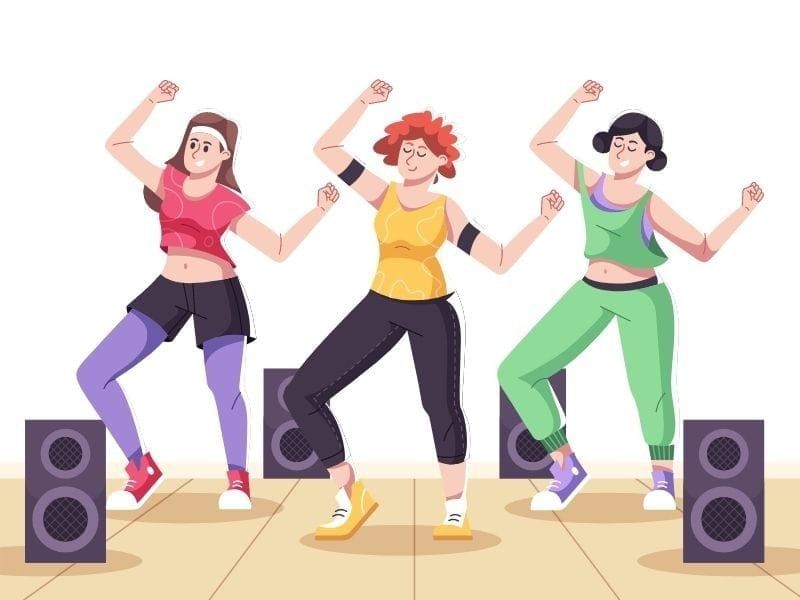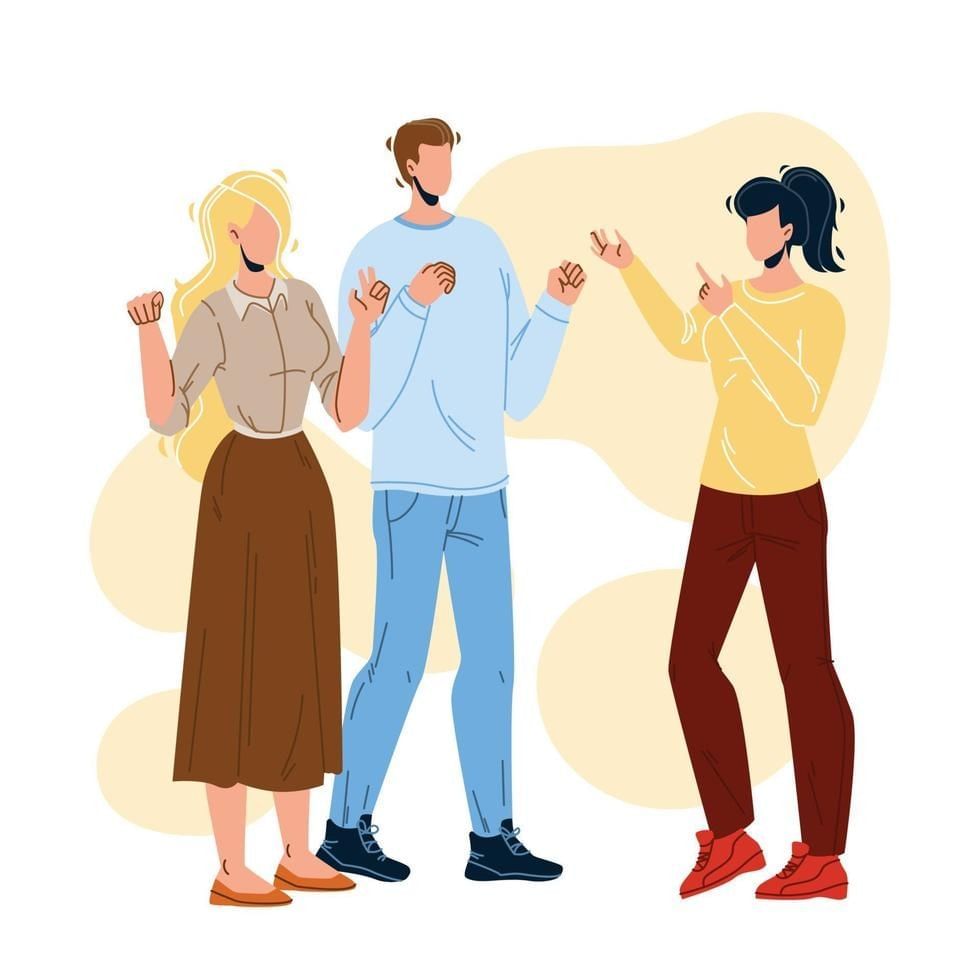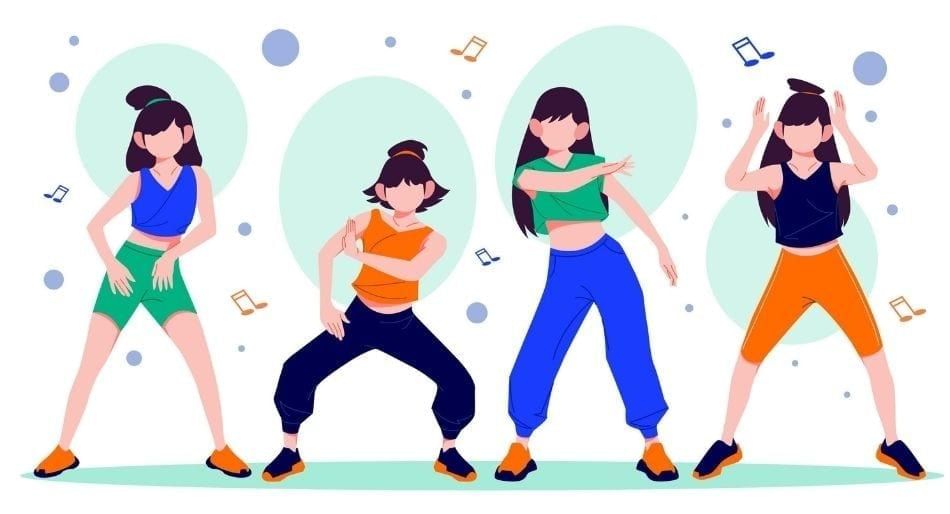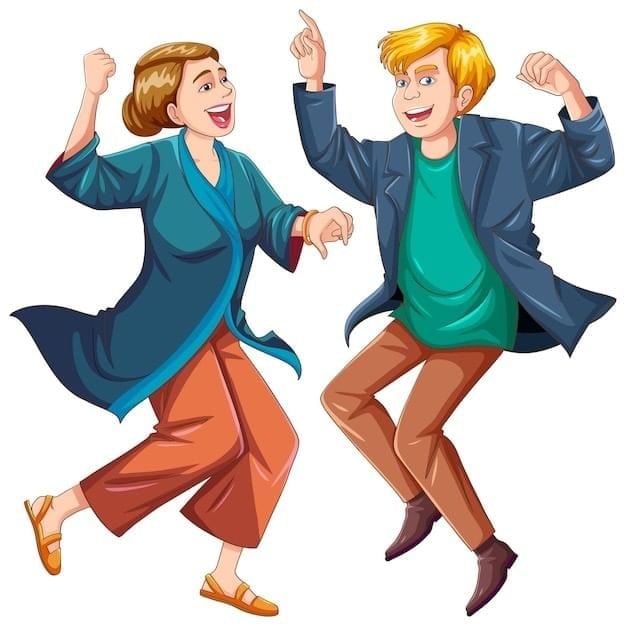Class 8 Exam > Class 8 Notes > Arts (Kriti) Class 8 - New NCERT > Chapter Notes: Dance for Well-being
Dance for Well-being Chapter Notes | Arts (Kriti) Class 8 - New NCERT PDF Download
| Table of contents |

|
| Introduction |

|
| Communicating and Expressing Emotion |

|
| Expressing Emotions through Dance |

|
| Dance for Healing |

|
Introduction
Dance is not only a form of artistic expression but also a way to communicate, express emotions, and achieve physical and emotional well-being. Through movements, gestures, and expressions, dance allows people to tell stories, convey messages, and share feelings without words. It connects the mind, body, and soul, and serves as a form of therapy and self-expression that can heal and inspire.
Communicating and Expressing Emotion
Communicating through Dance

- Hand gestures in dance can carry one or multiple meanings and are used to tell stories and communicate ideas.
- Single-hand gestures are called Asamyuta Hastas and both-hand gestures are called Samyuta Hastas.
- The Abhinaya Darpaṇam describes these hastas in Sanskrit shlokas.
- Asamyuta Hasta: There are 28 single-hand gestures along with 4 additional ones, described in shlokas (Nos. 89–92) by Nandikeśhvara.
- Samyuta Hasta: There are 23 combined-hand gestures, each denoted by specific words in the shloka (Nos. 172–175) from Abhinaya Darpaṇam.
Exploring Hastas as a Sign Language

- Before spoken language, humans used gestures and signs to communicate.
- In dance, hastas can be used to create a symbolic sign language.
- Daily-life gestures can be observed and linked to hastas.
- Different dance forms such as Mohiniattam, Bharatanatyam, Kuchipudi, and Kathak use hastas as part of storytelling and expression.
Expressing Emotions through Dance

- Emotions shown in a dance performance can deeply touch the audience, making them feel joy, sadness, or other emotions.
- Bhāva: The first instant feeling or thought that arises in response to something.
- Experiencing and expressing emotions can be healing as it gives an outlet to deep feelings.
- Breath plays an important role in expressing emotions clearly.
- For example:
- Fear: rapid breathing, trembling, perspiration, loss of facial colour.
- Disappointment: heavy sigh or exhale.
- Dance uses the whole body including breath, facial expressions, and gestures to express emotions in a stylised manner.
Examples of Bhāva and Rasa
- Utsāha Bhāva → Veera Rasa: Courage or bravery expressed through dance.
- Bhaya Bhāva → Bhayānaka Rasa: Fear expressed with gestures and expressions.
- Jugupsa Bhāva → Bibhatsa Rasa: Disgust recreated through dance movements.
- Vismaya Bhāva → Adbhuta Rasa: Wonder or amazement shown in a group performance.
- Krodha Bhāva → Raudra Rasa: Anger expressed through intense movements.
- Shoka Bhāva → Karuna Rasa: Sadness shared to find emotional relief.
- Hāsa Bhāva → Hāsya Rasa: Laughter recreated to spread joy.
- Rati Bhāva → Shringāra Rasa: Love expressed and shared with others.
- Nirveda Bhāva → Shānta Rasa: Peace and contentment achieved through meditation after expression.
Dance for Healing

- Dances such as Poothana Moksham or Surpanakha scenes appeal to diverse audiences.
- Dance heals physically and emotionally:
- Head and neck movements can help cure spondylitis.
- Eye movements can improve eyesight.
- Dance movement therapy, healing through dance, and dance and wellness are career options.
- Psychologists and physiotherapists may use movement as a form of therapy.
- Releasing emotions through dance can bring a sense of relief and emotional healing.
- Watching and relating to emotions in dance can create empathy.
The document Dance for Well-being Chapter Notes | Arts (Kriti) Class 8 - New NCERT is a part of the Class 8 Course Arts (Kriti) Class 8 - New NCERT.
All you need of Class 8 at this link: Class 8
|
76 docs|19 tests
|
FAQs on Dance for Well-being Chapter Notes - Arts (Kriti) Class 8 - New NCERT
| 1. What are the main ways in which dance can be used to express emotions? |  |
Ans. Dance serves as a powerful medium for expressing emotions through body movements, rhythm, and choreography. It allows individuals to convey feelings such as joy, sadness, anger, and love without the need for words. Various dance styles, from ballet to contemporary, provide different techniques to express complex emotional states, allowing dancers to connect with both their own feelings and those of the audience.
| 2. How does dancing contribute to well-being and mental health? |  |
Ans. Dancing contributes to well-being and mental health in several ways. It promotes physical fitness, improves mood, and reduces stress through the release of endorphins. Additionally, dance encourages social interaction and self-expression, which can enhance self-esteem and overall emotional resilience. Participating in dance activities can also provide a sense of community and belonging, further supporting mental well-being.
| 3. What is dance therapy and how does it differ from traditional forms of therapy? |  |
Ans. Dance therapy is a therapeutic approach that utilizes dance and movement to support emotional, cognitive, and physical integration. Unlike traditional forms of therapy that may rely heavily on verbal communication, dance therapy emphasizes non-verbal expression, allowing clients to explore and express their emotions through movement. This approach can be especially beneficial for individuals who find it challenging to articulate their feelings verbally.
| 4. Are there specific dance styles that are more effective for emotional expression? |  |
Ans. While any dance style can be effective for emotional expression, certain styles may resonate more deeply with individuals depending on their personal preferences and experiences. For instance, contemporary dance often emphasizes fluid and expressive movements that can convey a wide range of emotions, while ballet may focus more on discipline and grace. Ultimately, the effectiveness of a dance style for emotional expression depends on the dancer's connection to the movement and the emotions they wish to convey.
| 5. Can dance be used as a tool for healing in specific populations, such as those with trauma or disabilities? |  |
Ans. Yes, dance can be a powerful healing tool for specific populations, including individuals with trauma or disabilities. Dance therapy can help trauma survivors process their experiences and emotions in a safe environment, facilitating healing and recovery. For individuals with disabilities, adaptive dance programs can enhance mobility, promote self-expression, and foster social connections, contributing to improved mental and emotional health.
Related Searches














